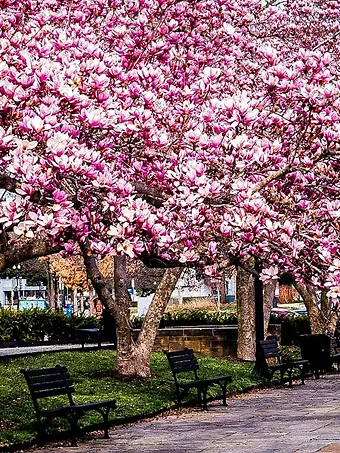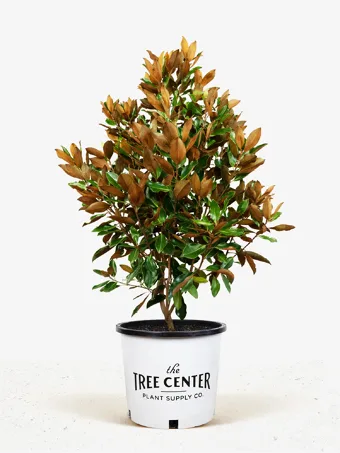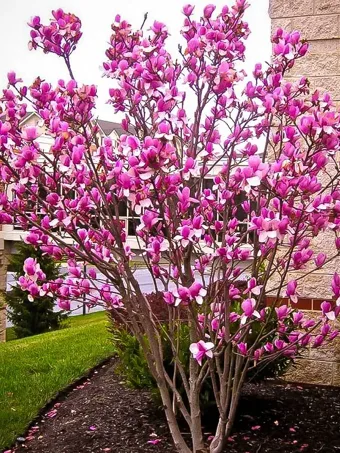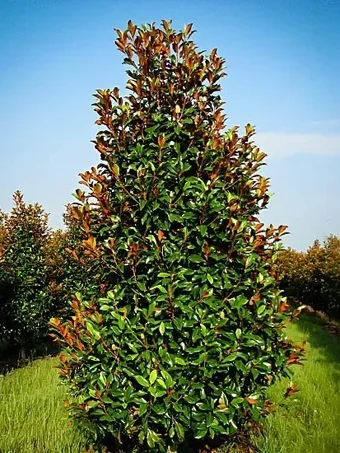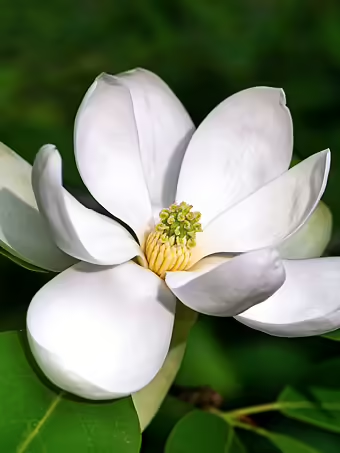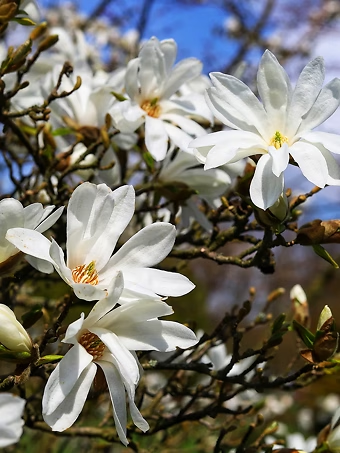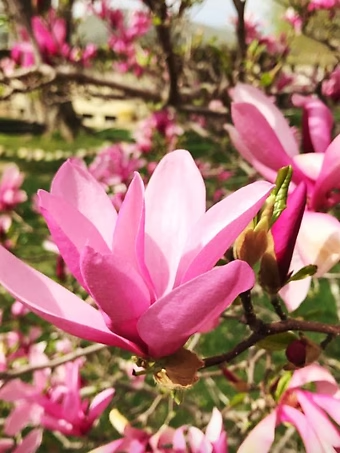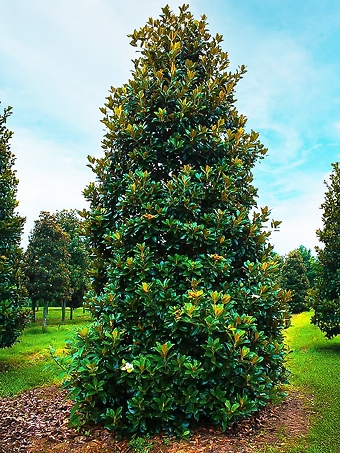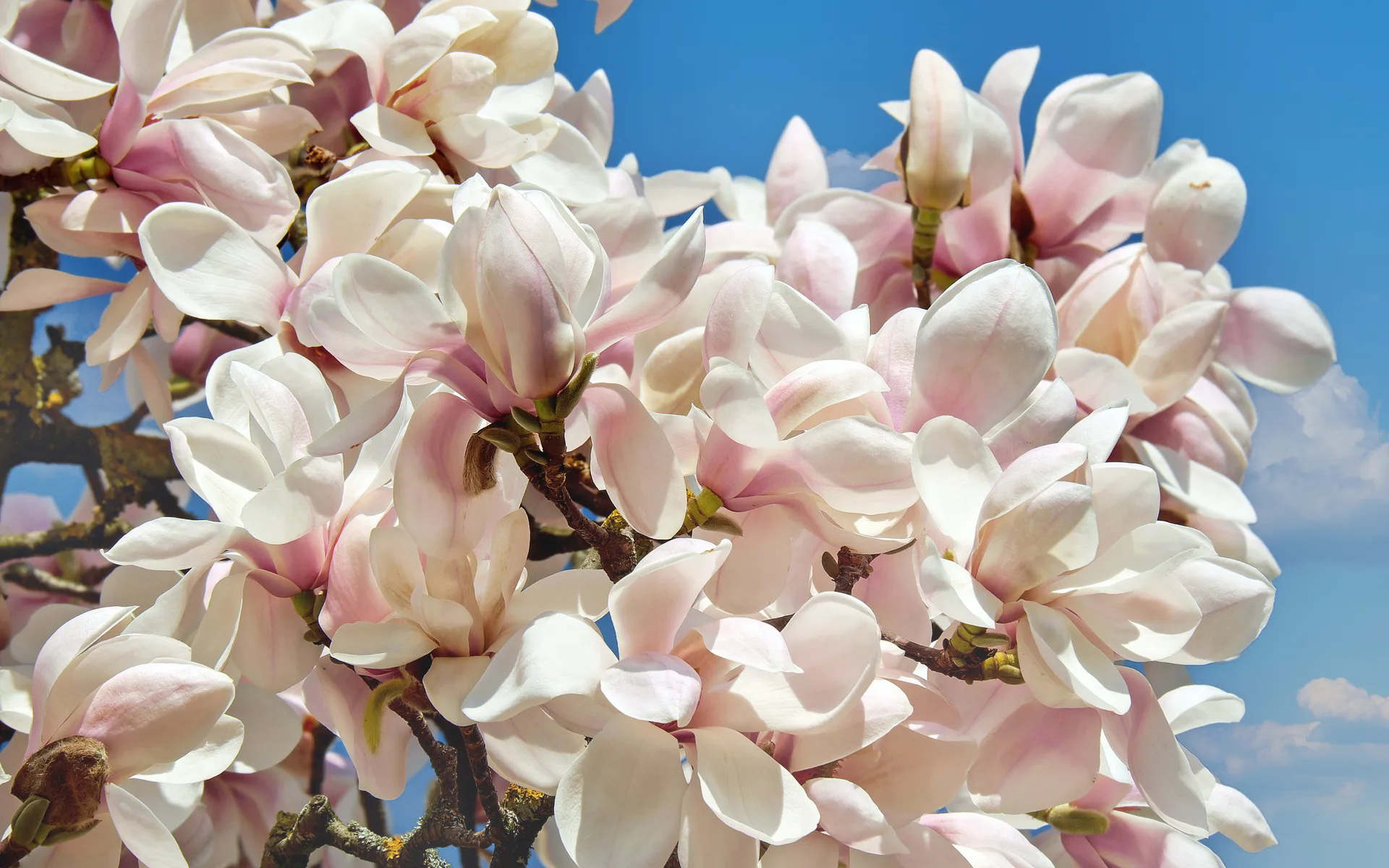
Written by s • How to Grow Magnolia Trees
Magnolias are without doubt a highlight of the spring. There is something almost unworldly happening when we see those extraordinary blooms standing proudly on the bare gray stems of the tree. Larger than anything we might expect to see in a colder zone, their marvelous tones of pinks, purples, whites and even yellows are a sight that make their annual return something that we eagerly look forward to, and remember later, when the trees become handsome green backdrops to later flowers.
The mystique of magnolias make their successful growing something of a secret too, and among many they have a reputation for being ‘difficult’. Nothing could be farther from the truth. With some basic thought about planting, and some simple aftercare, they are no more difficult than any other flowering tree, so let’s explore how to succeed with these garden beauties (We will focus on growing the deciduous, spring-blooming kinds, and leave their evergreen, summer-flowering cousins for another time.)
What are the best Zones and Climates to Grow Magnolias?
As a gardener at the cold end of the zone map, I was pretty surprised the first time I saw one in full bloom in February, in zone 9. But yes, there are flowering magnolias that will grow all across the zone map, at least from zone 4. In zones 4 and 5 you should be a little careful about the varieties you choose, and forms of the star magnolia, Magnolia stellata, which are mostly white flowering. ‘Centennial Blush’ is an exception, and a gorgeous choice for zone 4. For deeper pink flowers in zone 4, and also great in much warmer areas, check out the different choices in the ‘Girl’ series, a group of hybrids between the star magnolia and the less-hardy but more colorful Magnolia liliifolia. These are great choices for cold zones and areas with where late spring frosts are common.
Once we reach zone 5, most varieties can be grown, and through into zone 7, anything goes when it comes to choosing plants. Most of these plants are loosely put together as ‘saucer magnolias’, because the broad petals open to a plate-sized bloom when mature. Once we enter zones 8 and 9, choosing a variety it depends where you are. In the northwest the choices remain broad, but in the southeast it pays to consider the different choices carefully, as some species and hybrids are sensitive to both heat and humidity, and some need more winter cold than those zones can deliver.
What Light Conditions are Best for Magnolias?
In most zones, if your soil is reasonably moist, then full sun is always best, and will give you the most prolific blooming. This is especially true in zones 4 and 5, but as the summer heat intensifies, a few hours of shade, preferably in the afternoon, can be the difference between success and failure, particularly if your soil is not ideal. However, a great thing about these deciduous magnolias is their ability to do well in the dappled shade beneath deciduous trees. That’s ‘dappled’ shade, not the deep shade beneath tall evergreen trees, or the heavy shade some trees will throw. But if the tree coverage is open and bright, nothing is more wonderful than a magnolia in bloom in that woodland setting.
What Soil will Magnolias Grow Best In?
In a few words, the classic ‘moist, rich and well-drained’ pretty much sums it up. In reality, few gardens are that perfect. As well, magnolias do best in neutral to acidic soils, and when planted in alkaline soils they often develop yellow leaves. The top priority is drainage, so avoid areas that are boggy and wet, or where the soil smells sour or just plain nasty. The ‘rich’ part can be taken care of with good soil preparation, so add plenty of compost, rotted leaves, or other rich organic materials when planting. Dig a wide area a full spade deep, and add plenty, along with some bone meal or any phosphate fertilizer. Use more of that compost as a mulch over the roots, in spring or fall, and don’t let grass grow underneath it for several years, until your tree is growing vigorously and is well established. As for ‘moist’, established plants are moderately drought-resistant, especially in cooler zones, but some regular deep soakings during dry periods can really make the difference, especially in the formative years.
Is It Good to Fertilize My Magnolia Tree?
Mulching with rich compost is always the safest and best way to fertilize a magnolia tree, but young trees will benefit from some standard tree fertilizer during the first few years after planting. Apply this in early spring and it will encourage good limb development. Although this may reduce blooming, in the long term it is worth sacrificing some blooms to gain development of the tree – you will be rewarded down the line with a much better tree, and lots of blooms.
Should Magnolias be Pruned?
The simply answer to that question is “No”, but some pruning can be useful. When plants are young, removing any very weak or damaged branches makes sense, but beyond that it is best to put your saws and pruners away. It is especially bad to do hard pruning on an older tree, as they often never recover, and stay stunted and sad forever. Left alone they develop wonderful gnarly branches that really add to their beauty in spring. If you do prune to control the size of form, the golden rule is ‘little and often’. Take several seasons to re-shape an existing tree, removing just a few limbs each year. The best time to prune is immediately after flowering, and prune back to a side-branch, avoiding leaving bare stems, as these often won’t re-sprout. Watch for very vigorous shoots coming from low down or at ground level. These are often the seedling used as a root-stock for grafting, and should be removed immediately. Look at the leaves – they will typically be different in size or shape to the leaves on the main branches, and that is always a sign they should be removed.
Can I Transplant My Magnolia?
We always advice careful thought when choosing planting spots for any tree, but often, if you got it wrong, you can move a tree in winter without any serious set-backs. That isn’t true of magnolias. Once planted and established, they really resent root disturbance, and will sulk or even die. So make sure you have thought about, and measured out, the likely mature size of your particular tree – it varies a lot – when planting. Beyond about 5 years in the ground, the chances of failure are high, so plant wisely to start with. If you do need to move a tree that has only been in the ground a couple of seasons, do it in spring, not fall, as that way the roots will start to re-establish quickly. Dig up as much root as possible, and never cut it if you don’t have to.
Check out our Magnolia page to see our current stock, and further down you will find our catalogue, where you can request a notification when the tree you want is back in stock again. We usually have fresh trees every spring, so start looking for where you want to plant.
